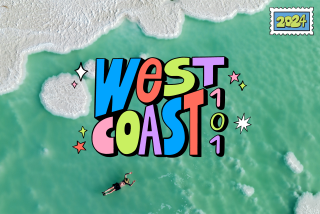Putting Geography on the Map
- Share via
Re “A Big Dose of Reality in Geography Knowledge,” Nov. 21: Although the National Geographic Society should worry that more young Swedes than Americans can locate the U.S. on a world map, Americans’ inability to apply geographic information to specific places is of far greater consequence. Identifying Iraq, Afghanistan and the Pacific Ocean on a map are to geography what the alphabet is to reading. They open the gate for boundless and lifelong learning. But those conversant in geography can also identify the global patterns of climate, landforms, economics, political systems, human culture and migration that order our complex world.
This ability to “think geographically” raises a flat map to life. While it is important to locate Mexico on a map, it is vital to know that since almost half its population is under 16 years of age, the immigration pressure on our border has just begun. Pinpointing Alaska is great, but it’s better to know that with just 1% of proven global reserves, Arctic oil will not reduce our dependence on foreign sources or affect the price of gas. I’m more optimistic about our collective future when Americans recognize how epidemic poverty -- half the global population drinks filthy water and survives on less than $2 per day -- provides Osama bin Laden and his ilk with an endless cohort of angry suicide bombers. When I see students at any grade level who understand these geographic cause-and-effect relationships, I encourage them to one day run for public office.
Stephen F. Cunha
Professor of Geography
Humboldt State University
Arcata, Calif.
*
Re “Where on Earth Are We?” editorial, Nov. 23: Students are lost! That would answer the editorial’s rhetorical question about the disgraceful results of the National Geographic survey. And The Times is correct in its observation that geography is not stressed on state tests. Before I quit the Capistrano Unified School District, I was told by my department head that “there is no time in the American government and economics curriculum for geography.” His statement was in response to my inclusion of a small amount of geography in my economics course.
How a teacher could cover the study of land, labor and capital without geography is mind-boggling. Since this conversation took place the CUSD has added a semester-long geography class to the graduation requirements. Let’s hope my former department head found the new geography materials helpful.
Jerry Sheahan
Laguna Beach
*
The editor seems disturbed that only 17% of our “young people” could locate Afghanistan on a world map on a National Geographic survey. I suggest that the editor assign an investigative reporter to take another survey, this time asking “old people” if they can find it. The results will be just as embarrassing. Better yet, next time you publish the California public school standardized test results, ask those oldsters some of the math questions on the high school exit exam.
Ralph Shaffer
Pomona


